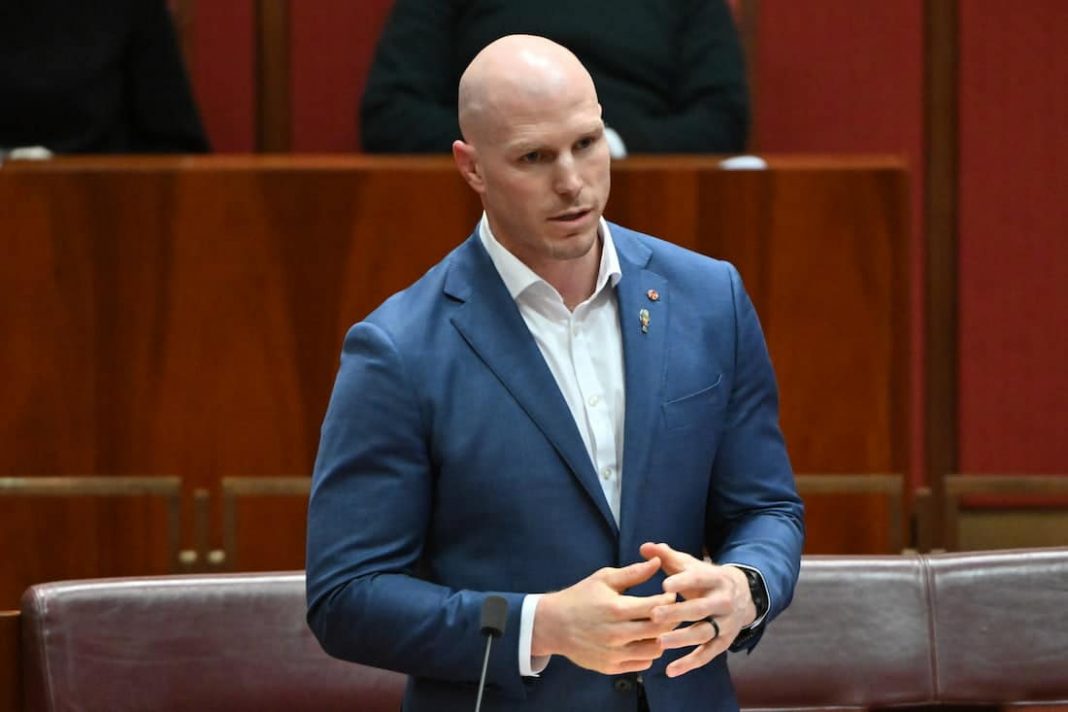Predictably, ACT Independent Senator David Pocock attacked the Coalition’s policy to build nuclear power generators. But in what may be a first, he did so on grounds of cost, a matter about which the decarbonising Senator had never shown the least curiosity with regard to the renewables program.
His previous objections were to policies that:
- did not sufficiently deprive Australians of cheaper cars, (Big Brother-like, he regards people as too stupid to decide for themselves between a higher initial price and lower fuel costs);
- imposed insufficient environmental costs on farmers and developers;
- failed to prevent households’ use of gas and provide sufficient subsidies for the fantasy that is green hydrogen, while seeking to ban coal exports.
There is a good case that nuclear power is far from ideal for Australia because of the variety of energy alternatives we have.
But wind and solar are not among these particular riches. And they would still not fit the bill even if nature had bestowed on us high wind speeds and (at least near the cities) better than average sunlight. We do however have the world’s best resources of coal, which is low sulphur and therefore non-polluting. If regulations permitted development, it is likely that we also have comparable quantities of natural gas to the US, where its abundance results in gas prices that are a quarter of what we pay.
Wind and solar are innately unreliable. The need to firm-up their intermittent supply makes them the most expensive and least dependable energy source. Wind droughts and periods of limp sunlight mean that the only value these energy sources have is a saving on fuel costs. But that saving is relatively small – fuel comprises only 5 per cent of the cost of nuclear or coal generators’ power and harnessing the wind and sun requires vast expenditures in windmills and panels. To provide reliable electricity, we need to virtually duplicate any wind and solar supplies with dispatchable power (gas, coal, nuclear or hydro). Wind/solar costs over $100 per megawatt hour for a saving – in the case of coal – of some $4-10 per megawatt hour. That’s a terrible trade off!
For climate worriers like Senator Pocock, supporting nuclear should be a no-brainer. Not only is it dispatchable and therefore reliable, but it has a safety record comparable to that of renewables and produces even less greenhouse gas per megawatt hour. Moreover, the horror at which the renewables industry and their propagandists have reacted to Dutton’s nuclear initiative is testimony to it being cheaper to wind and solar, more than half the costs of which are covered by subsidies from the taxpayer or regulatory impositions on the customer.
The ACT Government was an early adopter of the Net Zero renewables scam. It claims that its net zero plan, by contracting power, will save households $735 per year. Not so fast! The capital’s energy purchases cost $160 million last year, almost double that of the previous year, when generator prices had collapsed as a result of COVID.
Even with half of their costs covered by subsidies from federal regulatory schemes, wind and solar prices are likely to be higher than those from conventional generators. The ACT policy of sourcing 100 per cent of energy from renewable supplies will amplify the cost increases from the Commonwealth’s renewable energy policies.
Furthermore, although the ACT might contract all its power from renewable sources, that does not mean such sources actually supply the territory. The ACT is part of an integrated grid dominated by supply from coal electricity generators, without which there would be frequent blackouts.
Getting to 100 per cent renewables is not only costly, but impracticable. The island of El Hierro in the Canaries boasted that it had succeeded in doing so but on examination, this was 100 per cent for only 1328 of the 8760 hours in the year. And El Hierro has a population of only 11,000, not the 500,000 projected for the ACT.
Closer to home, Australia’s 100 per cent renewables poster child is King Island (population 1,600) in the Bass Strait. Vast spending on wind, solar, biodiesel and batteries over the past dozen years were trumpeted as recently allowing 33 continuous hours of renewable supply. But the bottom line is that over the year, diesel generators provide half of total supply.
If the ACT wants to supplement its dependency on public service jobs, it needs low cost energy. Aside from imposing unnecessary costs on the territory’s households, the ACT Government’s energy policies are a deterrent to any such aspirations.
Editor’s note: Dr Alan Moran was the Director of the Deregulation Unit at the Institute of Public Affairs from 1996 until 2014 and was previously a senior official in Australia’s Productivity Commission and Director of the Commonwealth’s Office of Regulation Review. He played a leading role in the development of energy policy and competition policy review as the Deputy Secretary (Energy) in the Victorian Government.



